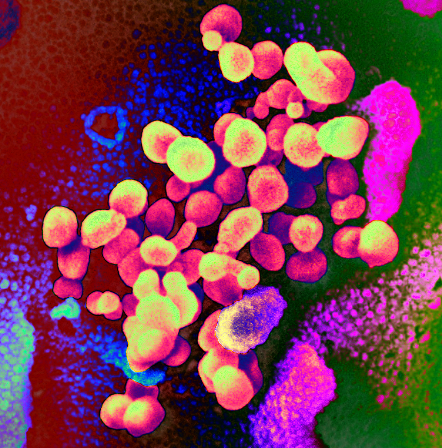Virus survival studied
 CSIRO has updated estimates of how long the SARS-CoV-2 virus survives on surfaces.
CSIRO has updated estimates of how long the SARS-CoV-2 virus survives on surfaces.
Researchers say the virus responsible for COVID-19 can survive for up to 28 days on common surfaces including banknotes, glass – such as that found on mobile phone screens - and stainless steel.
Additionally, the experts say their new study shows SARS-CoV-2:
- survives longer at lower temperatures
- tends to survive longer on non-porous or smooth surfaces such as glass, stainless steel and vinyl, compared to porous complex surfaces such as cotton
- survives longer on paper banknotes than plastic banknotes
“Establishing how long the virus really remains viable on surfaces enables us to more accurately predict and mitigate its spread, and do a better job of protecting our people,” CSIRO Chief Executive Dr Larry Marshall said.
“Together, we hope this suite of solutions from science will break down the barriers between us, and shift focus to dealing with specific virus hotspots so we can get the economy back on track.”
The work was undertaken at the Australian Centre for Disease Preparedness (ACDP) in Geelong.
Dr Debbie Eagles is Deputy Director of ACDP, which has been working on both understanding the virus and testing a potential vaccine.
“Our results show that SARS-CoV-2 can remain infectious on surfaces for long periods of time, reinforcing the need for good practices such as regular handwashing and cleaning surfaces,” Dr Eagles said.
“At 20 degrees Celsius, which is about room temperature, we found that the virus was extremely robust, surviving for 28 days on smooth surfaces such as glass found on mobile phone screens and plastic banknotes.
“For context, similar experiments for Influenza A have found that it survived on surfaces for 17 days, which highlights just how resilient SARS-CoV-2 is.”
The research involved drying virus in an artificial mucus on different surfaces, at concentrations similar to those reported in samples from infected patients and then re-isolating the virus over a month.
Further experiments were carried out at 30 and 40 degrees Celsius, with survival times decreasing as the temperature increased.
The study was also carried out in the dark, to remove the effect of UV light as research has demonstrated direct sunlight can rapidly inactivate the virus.
“While the precise role of surface transmission, the degree of surface contact and the amount of virus required for infection is yet to be determined, establishing how long this virus remains viable on surfaces is critical for developing risk mitigation strategies in high contact areas,” Dr Eagles said.







 Print
Print